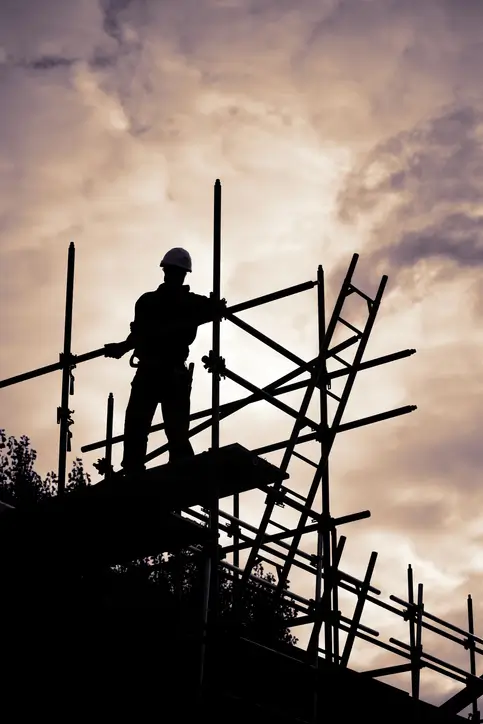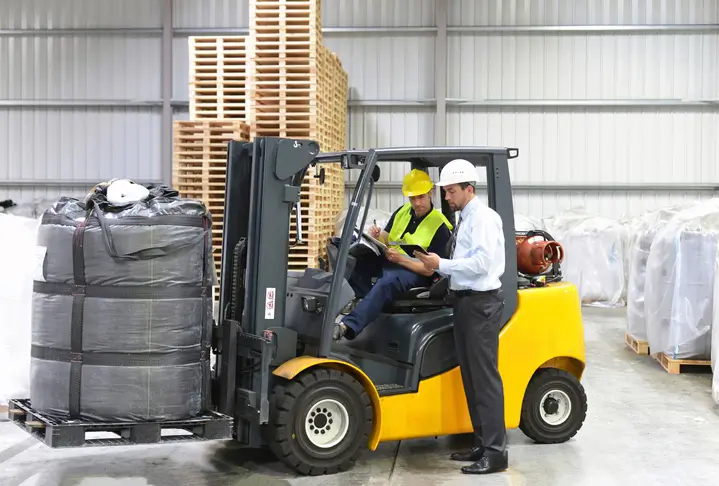OSHA Fatal Four Hazards: What To Know In 2025
With the rising growth, the industry also contains a very high risk of fatal injuries leading to deaths in the construction industry, which prompts us to write about fatal four OSHA. With over $1,293 billion in capital spending, the United States is one of the world’s biggest construction markets. Construction ventures that had previously slowed have resumed their momentum after the recession.
Positive developments in the residential sector are the primary drivers of the booming construction sector’s growth. By 2022, new construction will total more than 1.53 trillion U.S. dollars. In the United States, the building industry employs about 11.2 million workers. The building construction industry in the United States is forecast to grow 5% CAGR to USD 1,428.5 billion by 2024.

There were 1,061 deaths in the construction industry in 2019. Around 20% of all Occupational deaths in the U.S.A. are related to the construction industry, which requires special attention to workplace safety and health protocols. In addition, all companies must comply with OSHA guidelines to avoid fatal injuries and violation penalties.

With the 80/20 rule, four deadly construction-related hazards result in around 60% of construction-related deaths. Since OSHA 30-Hour Construction training will enable workers to correctly identify, manage and prevent potential site hazards such as Focus Four and other unpredictable ones, it is advised that workers opting for a supervisory role in the construction industry get enrolled in this online training course to ensure workplace safety.

In this article, we will focus on eliminating 60% of fatal injuries by emphasizing the construction industry’s four malignant causes of death. A total of 637 deaths are caused by the construction industry’s Fatal Four accidents.

OSHA’s FATAL FOUR OSHA
In 2022, 1,069 construction workers on their jobs, a rate of 9.6 fatalities per 100,000 full-time workers. Most of these workers were victims of fatal four category of accidents that includes falling, electrical hazards, stuck-by and caught-in/between hazards.
Fall accidents lead to 36.5% of deaths in the construction industry
Fall is the most common cause of death in construction work and other non-fatal injuries. Employees falling accounted for almost 36.5 percent of all occupational deaths. The fatal construction accidents that involve workers falling to their demise is unfortunately extremely widespread. Workers that have fallen due to exposed edges or cracks, poorly built walking or working platforms, workers who have dropped off ladders, floors, scaffolding, massive skyscraper building areas, and so on, all due to a failure to use adequate fall safety, are among those who have been injured. Falling is the leading cause of death in construction.
Guardrails, safety nets, harnesses, other fall protective devices, and proper safety preparation are examples of fall protection equipment. Employers should educate employees on how to detect and prevent fall hazards. This can be done through online fall protection training. Beyond that, there are several precautions employers should take to reduce the danger of other workplace falls. All companies must comply with OSHA fall Guidelines and compliance training certificates to prevent injuries and violations.
Electrical Hazard leads to 8.5% of deaths in the construction industry
According to OSHA, electrocutions contributed 8.5 percent of all building site fatalities in a recent year, taking the number second place in the prominent OSHA fatal four hazards. Since construction requires electrical machinery and ongoing or in-progress electrical work, the chance of electrocution on a construction site is significantly greater than elsewhere.
Therefore, OSHA allows building sites to use such precautions, protective devices, signs, and protocols due to the possibility of electrocution. It involves using “Lockout and Tagout” techniques to switch off electrical appliances when doing work. Severe injury or death will occur if these precautions are not performed or if proper protection equipment or signs are not used or abided by.
Electrical injuries and accidents are the most costly and complex to treat. They risk permanently destroying the body’s internal electronic pulses for critical tasks such as heart rhythm maintenance and causing severe injuries to other major organs.
They also put the patient at risk of lethal infection due to skin disruptions, graft loss, and procedural modifications. Companies will save money on treating electrical burns by investing in less costly OSHA 30 compliance certificates. Companies will also protect their employees by educating them through electrical safety courses and fostering a culture of safe procedures and protocols. These safety measures will help companies reduce deaths in the construction industry.
Stuck-By Hazard leads to 8.4% of deaths in the construction industry
According to OSHA, 8.4% of construction personnel who died in a recent year were injured as they were hit by another object, ranking them in third position for Fatal four OSHA. These deadly incidents included items as small as a power tool rolling off scaffolding and as big as excavators, bulldozers, or other heavy machinery. Many severe injuries can occur when an object hits a worker. The four common types of struck by hazards are falling objects, flying objects, swinging objects, and rolling objects.
Even if they are wearing hard hats or other protective gear at the time of the crash, workers who are struck by objects falling from a height can sustain a fatal head injury or spinal cord injuries. A worker hit by a heavy object of materials or a component of heavy machinery can sustain fatal wounds, crush injuries, or other severe internal organ injuries, in addition to skull or spinal injuries. To prevent these types of accidents, employers should provide hand and power tool safety training to their workers.
Caught-in/Between Hazard leads to 1.4% of deaths in the construction industry

As per OSHA, laborers stuck in or between two things on the job site accounted for 1.4 percent of all deaths in the construction industry, ranking at number four in Fatal 4 OSHA. This event varied from trench collapses that buried employees to employees stuck between two moving mechanical devices.
Caught-in or caught-between collisions are frequently avoidable by ensuring the tunnel walls are secured and construction sites are free of all people when moving heavy machinery. When these events happen, the traumatic injury can vary from brain and spinal cord trauma to asphyxiation, amputation, or bone fractures.
Conclusion
All of the above Fatal Four OSHA are easily avoided with efficient training and warning signs. Employers should train employees to be more vigilant. Construction companies should provide all related compliance training to their work to avoid adding more numbers to the construction fatality and injury statistics.
Enrolling their employees in OSHA 10-Hour and OSHA 30-Hour training online can be advantageous for employers and the company since financial stability and productivity will be rapidly enhanced. In addition, medical compensation costs and lost workdays are also reduced, which will directly focus on better work performance. By focusing on the above four areas, Companies can perform tasks with better safety protocols and save their employees from accidents.




